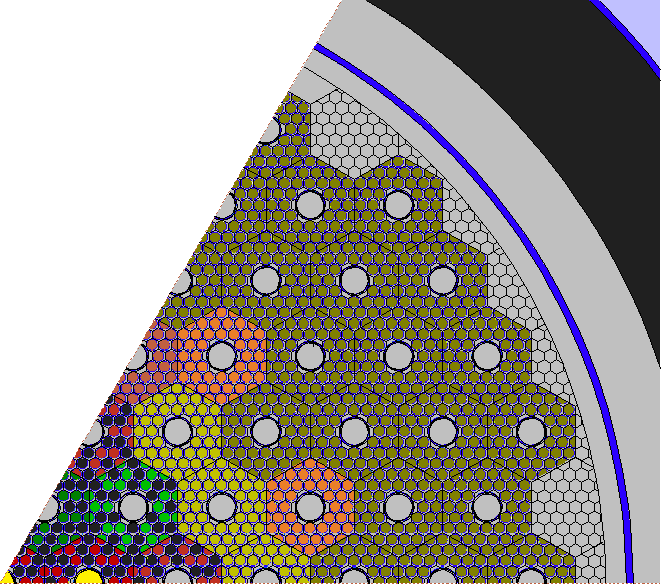A couple years back, I was part of a design team for our Nuclear Engineering class at University of Missouri's Missouri University of Science and Technology. We did a Lead-Bismuth Eutectic cooled Small modular reactor; I had wanted to do a very compact core, like so:

The coil around the core carries the secondary coolant and working fluid, which was supercritical CO2. Liquid metal can be cooled this way, because the transmission of heat through mixed covection and conduction is very fast (16 W/m/K at our 570 °C operating temperature). Further improvements, like using nitride fuel, gap filled cladding, and so on allowed for this.
Now, the Russian Alfa class subs had LBE cooled cores, but their electrical secondary heaters never worked right, and so their reactors ran hot for their entire service life. We planned for a 10-year core life, with shipping of the used pressure vessel, cooled, in situ back for processing. The LBE would be shipping shielding, and prevent accidents in shipping from spilling nuclear material. nothing like being frozen solid in metal to prevent trouble.
10 years at 50 MW in a tight core is an interesting job. We wanted to use a kernel as small as possible, and thorium as much as possible. The trick was in the Thorium... it can breed positive in epithermal and even thermal neutron specturms. So an initial load of about 1.2 tons of U233, 1.2 tons of U238 and 12.6 tons of Thorium was able to breed slightly positive over the lifetime, but because the breeding was not concentrated, it lost criticality. So, not only were we able to get 75,000 MWd/MTU, we ended up with more U233 than we started with. Plutonium and some Neptunium also bred from the U238, but only a few kilograms.

The big trick on the core was the black rods in the center: pyrolytic carbon instead of fuel. The added enough moderation that our fastest nuetrons dropped energy to be able to effectively be absorbed in the thorium. Also note the carbon reflector inside the outer steel wall of the core vessel. This was a bit different than my initial design, but not much.
Layout was: 
Heat is all well and good, but you need to make it into power somehow... and for commercial amounts of power, you need to have a turbine. For us, it was a single shaft closed brayton cycle system, very simple - turbine, compressor, and a single recuperator. The power load... 25 MWe - allowed the expedient of fan coolers to ambient air, allowing the plant to function anywhere that could get airflow. The high exiting temperature from the core neccesitated using HT9 steel or equivalent, but it was well worth it for the additional power output per gram of fissile loaded.
I worked the core with Ed Norris, and I managed the sub-group working up the power production, heat transfer and thermodynic cycle. All iin all, we met our design criteria, and with an entended barrel core (which the guy doing the convection work said was needed) we still met our price point, putting the SMR cost-competitive for remote site independent operation. The design is also significantly more robust than water or light metal reactors, because of the very large heat sink the LBE represents.
Cool video. Thanks.
Downvoting a post can decrease pending rewards and make it less visible. Common reasons:
Submit